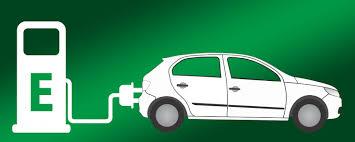The electric vehicle market has been experiencing explosive growth. In 2022, global sales will exceed 1 trillion US dollars (about 1.283 quadrillion won/won), and domestic sales will exceed 108,000 units. Inevitably, the demand for high-capacity batteries capable of extending the driving range of electric vehicles is growing. Recently, a joint research team from Pohang University of Technology and Sogang University developed a functional polymer adhesive for stabilizing high-capacity anode materials that can increase the battery life of current electric vehicles by at least 10 times.
A research team led by Soojin Park (Department of Chemistry) and Youn Soo Kim (Department of Materials Science and Engineering), professors at Pohang University of Technology, and Jaegeon Ryu (Department of Chemical and Biomolecular Engineering), professor at Sogang University University, developed a charged polymer binder for high-capacity anode materials. The material is stable and reliable, providing 10 times or more capacity than conventional graphite anodes. The breakthrough was achieved by replacing graphite with silicon anodes, combining layered charged polymers while maintaining stability and reliability. The findings were published as a cover article in the journal Advanced Functional Materials.
LiFePo4 12v 100ah lithium ion battery storage
High-capacity anode materials like silicon are critical for making high-energy-density lithium-ion batteries; they can provide at least 10 times the capacity of graphite or other existing anode materials. But the challenge is that the volume expansion of high-capacity anode materials during reaction with lithium poses a threat to battery performance and stability, and to alleviate this problem, researchers have been working on polymer binders that can effectively control the volume expansion.
However, research to date has only focused on chemical crosslinking and hydrogen bonding. Chemical crosslinking involves covalent bonds between binder molecules, making them solid, but with a fatal flaw: once broken, the bonds cannot be restored. Hydrogen bonds, on the other hand, are reversible secondary bonds between molecules based on electronegativity differences, but their strength (10-65 kJ/mol) is relatively weak.
100ah lifepo4 12 volt deep cycle battery for Solar Energy Storage
The new polymer developed by the research team utilizes not only hydrogen bonds, but also Coulomb forces (the attractive force between positive and negative charges). These forces have a strength of 250 kJ/mole, much higher than hydrogen bonds, but they are reversible and therefore easy to control volume expansion. The surface of high-capacity anode materials is mostly negatively charged, while layered charged polymers are alternately arranged, positively and negatively charged, and can effectively bond with the anode. In addition, the team introduced polyethylene glycol to modulate physical properties and facilitate the diffusion of lithium ions, resulting in the thick, high-capacity electrodes and maximum energy density found in lithium-ion batteries.
Professor Soojin Park explained: "This research has the potential to significantly increase the energy density of lithium-ion batteries by adding high-capacity anode materials, thereby extending the driving range of electric vehicles. Silicon-based anode materials have the potential to increase driving range by at least 10 times."


